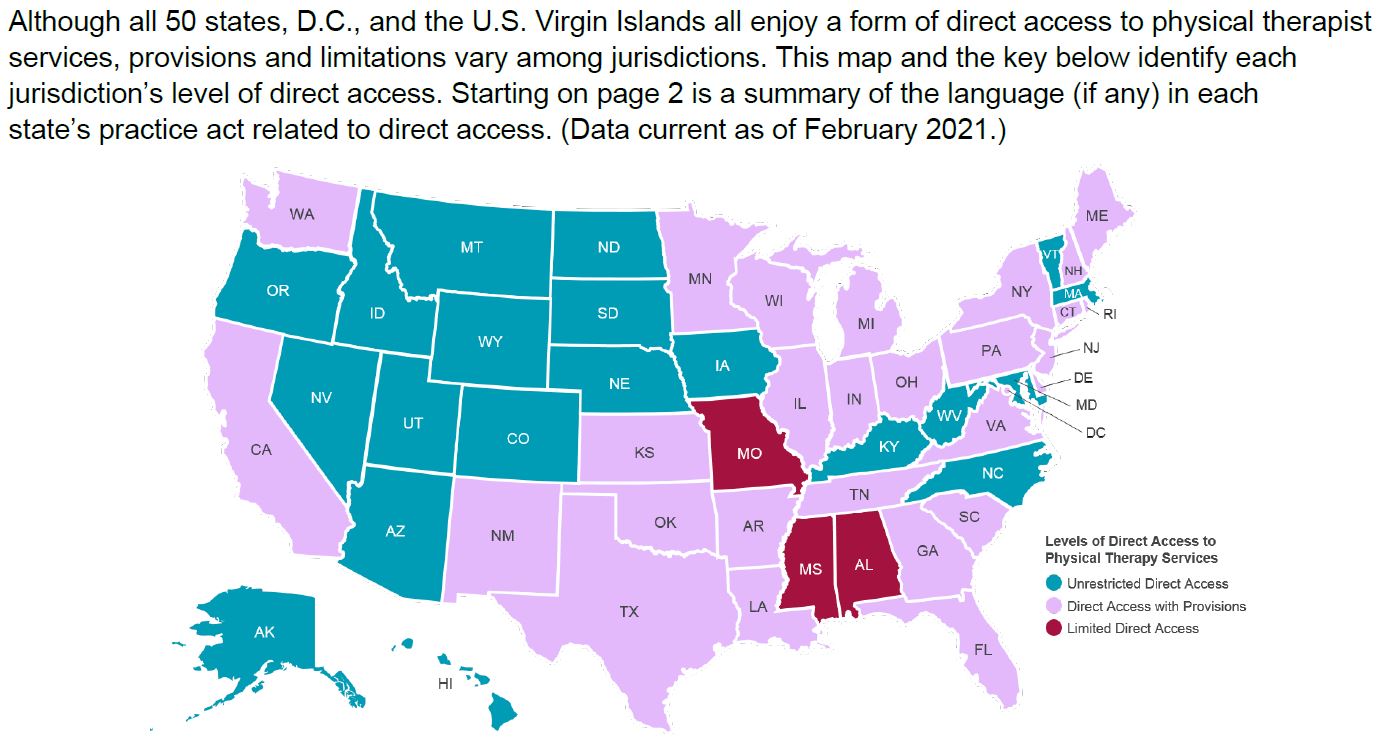by Jonathan V. Luu
September, 2012
Athletes who train and compete at all levels, from recreational to elite, are affected by injuries from time to time, and one of the most pervasive conditions across the spectrum of physical activity is knee pain or Patellar Tendinopathy. Athletes participating in sports such as basketball, volleyball, and track & field are the most at risk for developing Patellar Tendinopathy, also referred to as “jumper’s knee”. Studies have also shown that this condition occurs more frequently in mature adolescents and adults, both males and females ranging in age from 16-40 years old1. Because Patellar Tendinopathy is so common and affects such a large, general population, it is of great importance to the team here at BreakThrough Physical Therapy that we educate our patients on the causes, symptoms, and available treatment for this condition.
What is Patellar Tendinopathy?
Patellar Tendinopathy is an injury to a tendon that causes pain, soreness, stiffness, and swelling. There are two different types of this condition: patellar tendinitis and patellar tendinosis. Patellar tendinitis is an acute (short term) injury causing inflammation to the patellar tendon, whereas patellar tendinosis is a chronic (long term) injury that involves micro-tears and scar tissue on that same tendon. Patellar Tendinopathy consists of several different stages which range from mild discomfort to severe pain and are categorized as the following3:
Stage 1: A dull ache or pain between the kneecap and the shin that occurs only after activity, without any functional impairment.
Stage 2: Localized pain that occurs during and after activity, without any functional impairment.
Stage 3: Localized pain that occurs at the beginning of the activity and persists long after the activity is completed. Function is limited.
Stage 4: Intense pain is present from the patellar tendon rupturing (complete tear). The knee is unable to function properly and will be extremely limited.
This injury at any stage may cause the affected person to stop participating in their daily activities due to pain and discomfort, and while resting is a major component of the healing process, arming oneself with a deeper knowledge of the condition is far more beneficial.
What are the causes of Patellar Tendinopathy?
Patellar Tendinopathy is mainly caused by overuse of the knee and particularly the patellar tendon. This tendon attaches the bottom of the knee cap (patella) to the top of the shin bone (tibia). The knee cap is attached to both the patellar tendon and the quadriceps tendon, which all work together with the quadriceps muscles to extend (straighten) the leg. Micro-trauma can occur when the patellar tendon is subjected to extreme forces such as rapid acceleration, deceleration, cutting, and jumping, resulting in Patellar Tendinopathy2. Athletes with this condition report anterior (front) knee pain or aching, usually at the inferior pole (apex or bottom) of the knee cap where the patellar tendon attaches.
Acute tendinopathy, referred to as patellar tendinitis, involves an active inflammatory process. This often immediately occurs following the injury, such as a bad fall/landing and can manifest itself as a bruise from the impact. Chronic patellar tendinopathy, referred as patellar tendinosis, usually manifests after 6 weeks to 3 months following overuse and/or stress overload of the patellar tendon. This injury is caused by degenerative changes occurring in the tendon, usually when athletes push past pain and don’t properly take the time off and allow the tendon to heal3. While patellar tendinitis can be treated and properly healed in about 3-6 weeks, patellar tendinopathy can take between 3-6 months to heal properly, if not longer. If no action is taken to heal from this condition, the patellar tendon can also be partially or completely torn, which in most cases will require surgery to return knee function. Fortunately, there are a variety of effective treatment plans for both forms of Patellar Tendinopathy, most of which are available through physical therapy.
What types of treatment are available for Patellar Tendinopathy?
There are many types of treatment that can address Patellar Tendinopathy, depending on the stage and severity of the injury. Since patellar tendinitis is mainly inflammation of the tendon, it is easily treated by the method known as R.I.C.E; which stands for rest, ice, compression, and elevation. Athletes who have acute tendinopathy generally only need to take a short period of time to allow the tendon to heal, while icing regularly to reduce swelling and inflammation. Also, massaging the knee will also help with pain, as it breaks up blood clots in the area and stimulates more blood circulation to speed up the healing process. Normally, athletes with patellar tendinitis return back to their normal activities in 3-6 weeks5.
Contrary to the fast recovery period of patellar tendinitis, patellar tendinosis occurs at the cellular level and will take a longer time to heal. This is caused from the degeneration of the patellar tendon which has accumulated blood clots in the area, which blocks circulation to the damaged tissue. Since tendons and ligaments already do not have an extensive direct supply of blood, chronic tendinopathy can take many months to heal4. The most common initial treatment for patellar tendinosis is physical therapy. Like the treatment for tendinitis, a physical therapist can apply massage techniques to break up the blood clots in the damaged area, which promotes a faster healing process. The physical therapist will then also evaluate the patient’s posture, biomechanics, strength, and flexibility of their lower extremity, so they can prescribe exercises that will strengthen the parts of the leg that needs to be addressed. They might also suggest various stretches to loosen up the muscles surrounding the knee, allowing better movement and function of the lower extremity.
Another method to treat patellar tendinosis is via injection of platelet rich plasma cells into the damaged area of the tendon. Platelet rich plasma, or “PRP”, is emerging as a widely popular method of treatment and a promising solution to accelerate tendon injuries naturally7. Many famous professional athletes such as Kobe Bryant, Derek Rose, and David Ortiz have had successful PRP treatments for their injuries. Platelets are found within blood, along with red blood cells, white blood cells, and plasma. These platelets contain healing proteins called growth hormones that are activated once released into the body7. To prepare PRP, blood is first drawn from the patient and then undergoes two stages of centrifugation designed to separate the platelet rich plasma cells from the blood. Then, the platelet rich plasma cells are injected into the site of injury as a “cocktail” of many healing proteins to stimulate repair and regeneration of damaged tissues. Because the patellar tendon has a low blood supply, PRP has been proven effective in increasing blood circulation in the area and using growth hormones to dramatically speed up the healing process7. This treatment plan, along with physical therapy, will yield a high success rate in the recovery of patellar tendinosis. While PRP is not 100% effective in treating patellar tendinosis consistently, studies have shown that it does well compliment regeneration and enhancement of degraded patellar tendon damage. PRP treatments will continue to be researched & developed, and will hold a promising future in advanced medicine.
What Steps to take if you are experiencing Patellar Tendinopathy?
Patellar tendinopathy may not be the most serious injury you can incur, but the prolonged pain it can cause and the risk of further injury if not dealt with properly make it worthy of notice. Once someone starts to develop patellar tendinitis, he/she should immediately take necessary time off to address the knee before the condition worsens. The best advice for avoiding tendinopathy is to listen to your body and take advantage of opportunities to educate yourself on proper athletic precautions.
If you are experiencing Patellar Tendinopathy or knee pain, follow these steps to ensure a fast and sound recovery:
- When you experience pain or discomfort in your knee, immediately stop your physical activities and rest the knee.
- Alleviate the knee with the R.I.C.E. method. (Rest, Ice, Compression, Elevation)
- Consult your Orthopedist or Physical Therapist for their assessment and the best plan of care.
There are always vast amounts of resources available in books, articles, magazines, and on the web, however nothing compares to direct one on one care with a qualified professional to assess your individual condition.
References
1. Lian OB, Engebretsen L, Bahr R. Prevalence of jumper’s knee among elite athletes from different sports. Am J Sports Med. 2005;33(4):561–67.
2. Khan KM, Maffulli N, Coleman BD, Cook JL, Taunton JE. “Patellar tendinopathy” some aspects of basic science and clinical management. Br J Sports Med. 1998;32(4):346–55.
3. Cook JL, Khan KM, Maffulli N, et al. Overuse tendinosis, not tendinitis. part 2: applying the new approach to patellar tendinopathy. The Phys and Sportsmedicine. 2000;28(6):1–11.
4. Cook JL, Khan KM, Purdam CR. Conservative treatment of patellar tendinopathy. Phys Ther in Sport. 2001;35(5):291–94.
5. Witvrouw E, Bellemans J, Lysens, et al. Intrinsic risk factors for the development of patellar tendinitis in an athletic population: a two-year prospective study. Am J Sports Med. 2001;29(2):190–95.
6. Khan KM, Bonar F, Desmond PM, et al. (1996). “Patellar tendinosis (jumper’s knee): findings at histopathologic examination, US, and MR imaging. Victorian Institute of Sport Tendon Study Group”. Radiology 200 (3): 821–7.
7. Charchian, B. Orthohealing blog: http://www.orthohealing.com/plateletrichplasmatherapy-prp/
A bit about Jon
Jonathan Luu received his Bachelors of Science in Kinesiology from San Jose State University with an emphasis in Pre-Physical Therapy in 2010. Since 2010 he has been gaining experience in the field as a physical therapy aide at BreakThrough Physical Therapy, in Sunnyvale, CA, and is currently in the process of applying to many graduate programs for his doctorate degree in physical therapy. In the future, Jonathan hopes to work in a sports specific setting, helping athletes recover and get back to their favorite activities. Aside from his work, Jonathan likes to play competitive volleyball (both indoor and beach), work out at his CrossFit gym, and spend time with his family and friends.



